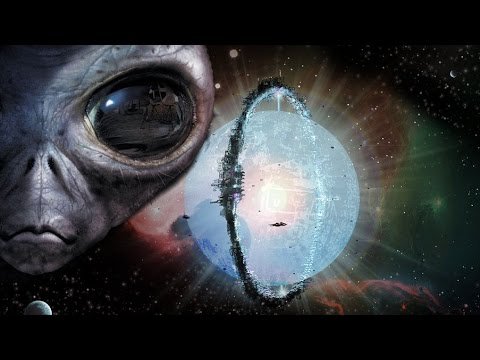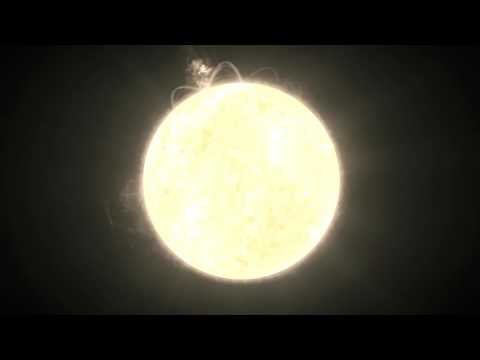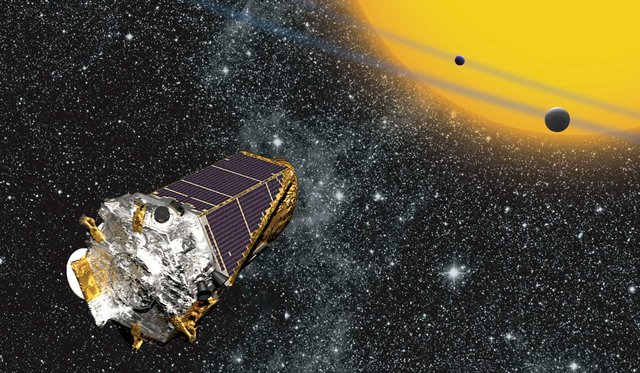The star with an alien megastructure is even stragner the we first thought.
Story of the star Tabby, known also as KIC 8462852, is getting more interesting.

In October of the previous yeah (2015) the world was informed about a star with a very unusual behavior. It was discovered by the telescope Kepler, which has already discovered thousands of exo-planets and other interesting discoveries. Kepler has been watching more then 100 000 stars in the legendary view field on the border between the Cygnus and Lyra constellations for several years. When one of the observed stars slightly dimmed and then brightened again, the exo-planet hunters could write down another newly discovered world outside our solar system.

But, the star KIC 8462852, which is roughly 1 500 light years away from Earth, is different. The star is a yellow-white dwarf of the F spectral class, which means it is roughly 1.5 times bigger the our Sun. This star, which got its nickname Tabby after her discoverer Tabitha Bayajion from Yale, dimmed during its observations twice very irregularly. And not by a small margin - it dimmed by roughly 20 percent, which is twenty times more then how much an usual star dimmed when a planet passes by. Thus the behavior of the star Tabby is almost certainly not caused by an planet.
Tabby is strange enough, that from the very start of its discovery, one of the possible causations for its behavior is a mega-structure (also known as a Dyson sphere) of a technically advanced alien civilization, which would be partially envelop the star and occasionally would block our view. As discovering an alien civilization by noticing events that are hard to explain by commonly known stellar phenomena is one of the most suggested way of finding one, this almost immediately sparked the interest of many people. But technically advanced and thus potentially dangerous aliens are always kept only as a last resort explanation and thus astronomers tried to come up with a less drastic explanation Shortly after a giant cloud of comets was suggested as a cause for its behavior. But this explanation, slightly forced on the first view, does not play much of a role today anymore.
In January of 2016 Bradley Scaefer of the State university of Louisiana in Baton Rouge came out. Bradley was analyzing activity of KIC 8462852 for the past century. Schaefer used old photographic disks from the years 1890 to 1989. From more then 1 200 photos he deducted that the star Tabby has been dimming through the whole of the past century - in total by roughly 15 percent. Schaefers research immediately unleashed a storm of discussion, that sadly came to no definitive solution.
These days Benjamin Montet and Josh Simon from Caltech have stepped into the discussion, which re-analyzed the results of the Kepler telescope. The confirmed Schaefer results and discovered that during the first thousand days of the Kepler telescope mission, the star was certainly dimming, by 0.34 percent of brightness per year. That is even twice the speed to which Schaefer came up with by analyzing old photos. They also discovered that during the next 200 days that star dimmed by an additional 2.5 percent - even more faster.

When we combine all of this information, we get a very interesting picture. The star KIC 8462852 - Tabby, goes at least through three different modes of brightness changes.
Sudden changes by roughly 20 percent, that sparked the debate of the possibility of an alien mega-structure.
An slow dimming, that was discovered by Schaeffer and now confirmed by Montet and Simon
A moderately fast dimming during a few hundred days, discovered by Montet and Simon
What should we think of all this? We could probably could come up with an explanation for each of these behaviors on its own, but all three of them by a single star are currently inexplainable by us. It would be interesting to find a stellar phenomena that could be responsible for all of changes in brightness of KIC 8462852. But what could it even be? Jason Wright of the Pennsylvania state university, whole came up with a theory of the alien mega-structure last fall is thrilled. Originally he was worried that his theory will be thrown of the table by a discovery of some boring false data or a machine error. The completely opposite has happened. Tabby is now a full-blown puzzle, which is talked about all over the world.
When it comes to aliens, Montet and Simon and even Wright and still being rather cautious. It is still a last resort answer for them. But just the fact that an alien mega-structure is still a possible answer drives a lot of people crazy. The star Tabby became a star that is worth looking at for prolonged periods of times. On Kickstarter over 100 000 dollars have been crowd-funded to buy viewing time on the Las Cumbres Observatory Global Telescope Network. They will be closely watching the star for a while year. Maybe a gigantic cloud of comet will be discovered, but perhaps, an alien mega-structure and thus proof that we are not alone in this universe will be found.
It is hard to believe we are the only species on a living and breathing planet in the universe. Mind blowing to grasp the idea that this light dimming might be caused by an alien species created mega structure...
Keep us posted!
While the idea my an alien civilization being the driving force behind the changes of brightness of the star is certainly appealing, it should be said that we are far far from being sure it is aliens. It could be a billion different things, since our knowledge about stellar phenomena is still very limited
True, that is why I use terms like 'might'. It would be mind blowing though, or maybe scary even, if there was proof to be found that there is a species out there more advanced than we are.
Anyway there is still so much more to explore. And that is the real beauty of it.